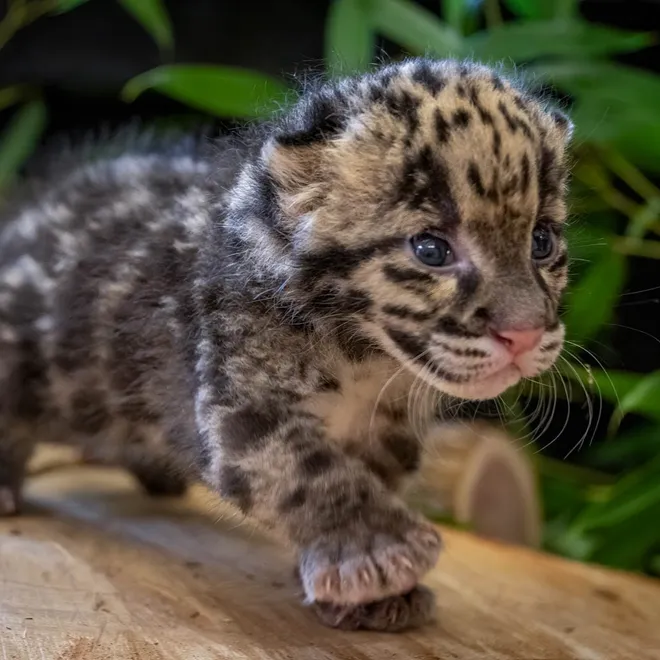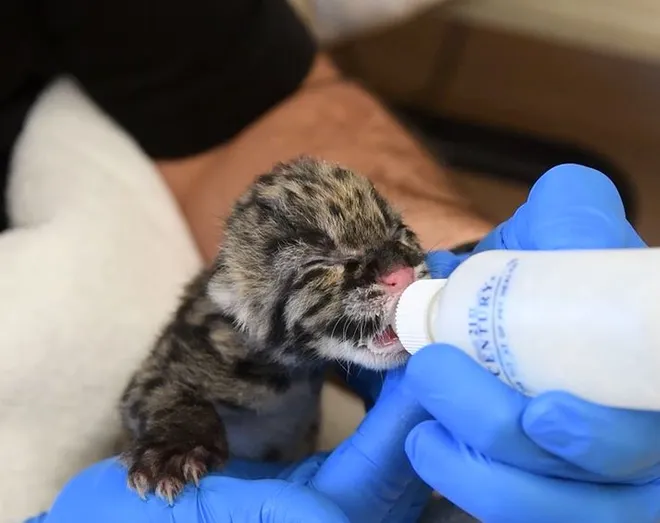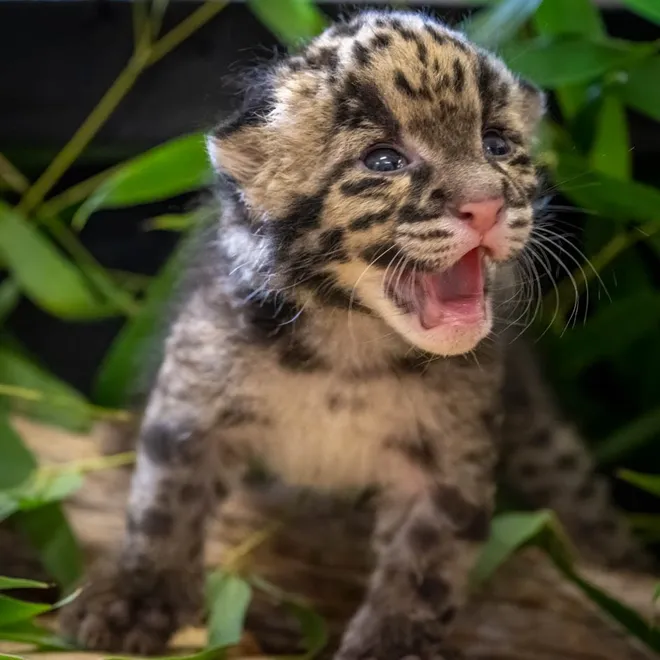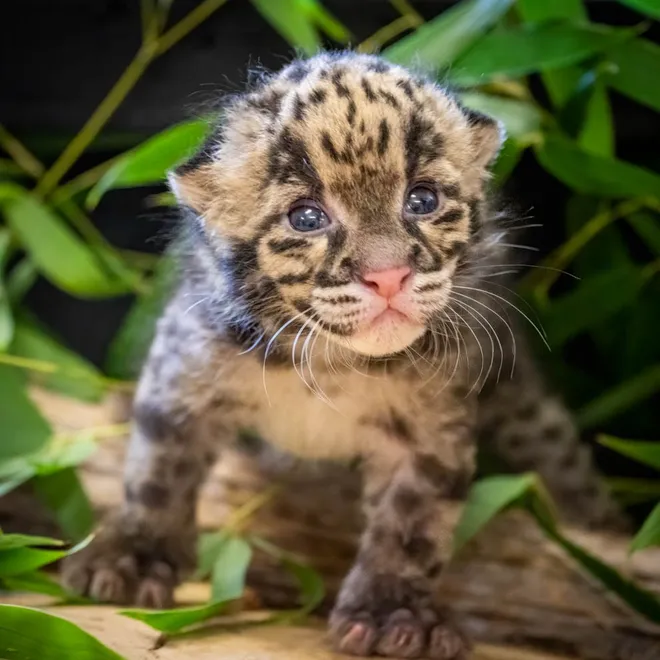Rare clouded leopard kitten born at OKC Zoo: Meet the endangered baby who's 'eating, sleeping and growing'

OKLAHOMA CITY − Days after the Oklahoma City Zoo and the conservation community welcomed a group of flamingo chicks and a red panda cub, they have now welcomed a little one that will also strengthen a species at risk of extinction − a baby leopard.
OKC Zoo's clouded leopard Rukai gave birth to a male kitten on July 18 after a 90-day gestation period at the Zoo’s Cat Forest habitat, the zoo said in an update on social media.
"Caretakers report the kitten is healthy and doing everything a newborn should be doing – eating, sleeping and growing," said the zoo.

As the male kitten continues to strengthen and thrive, he will eventually be moved to another Association of Zoos and Aquariums (AZA) accredited zoo to breed. He will also act as a demonstration animal for the program as an ambassador for his species, raising awareness and promoting conservation efforts.
The OKC Zoo has been an active participant in the AZA's Species Survival Plan (SSP) for clouded leopards. This plan aims to ensure the preservation and survival of this vulnerable species.
Only one in world:Rare giraffe without spots born in Tennessee zoo, now it needs a name
Oh, baby!Oklahoma City Zoo has their hands full with the youngest new additions

The zoo's animal care experts will take charge of hand-rearing the kitten, ensuring his optimal growth and well-being.
What are clouded leopards?
Native to South Asia, Southeast Asia and the eastern Himalayas, clouded leopards were officially recorded as a species in 1821, making them one of the most ancient cat species, according to the San Diego Zoo Wildlife Alliance.
Clouded leopards have been named for their cloud-like spots though genetic studies have shown that clouded leopards are a separate genus of cats and not just a type of leopard, as the name implies. “Cloudeds” are most closely related to snow leopards and are part of the same taxonomic subfamily, Pantherinae, as tigers, lions, jaguars, and true leopards. However, because they cannot purr or roar, they are neither a true great cat nor a true small cat.

Extremely secretive and elusive, clouded leopards are known to be one of the best climbers. The species’ flexible ankle joints that can rotate backward, short and stout legs, large paws, long tail, and sharp claws with specialized padding that conforms to the shape of branches contribute to their impressive arboreal skills, says OKC Zoo. The species is able to climb upside down, hang from branches with its hind feet and climb down trees head first.
Like all wild cats, clouded leopards are carnivores, preying on gibbons, macaques, slow loris, small deer and wild boars, which they ambush from the trees or stalk from the ground. Though these cats are relatively small in size, they can take down sizeable prey because of their strong legs, large canines and ability to open their mouth to about 100 degrees, says the Smithsonian's National Zoo and Conservation Biology Institute.
Escaped!A visual tale of OKC's brush with a loose leopard
How rare are clouded leopards? Elusive species dons endangered tag
Clouded leopards are endangered species because their populations are rapidly declining due to poaching and loss of habitat, according to the World Wildlife Fund. Their average life span is 12 to 15 years, though they may live up to 17 years in human care.
The precise number of clouded leopards in the wild isn't known because of how elusive the animals are, the WWF says, but the population is thought to be declining because of habitat loss and poaching.
Disclaimer: The copyright of this article belongs to the original author. Reposting this article is solely for the purpose of information dissemination and does not constitute any investment advice. If there is any infringement, please contact us immediately. We will make corrections or deletions as necessary. Thank you.







